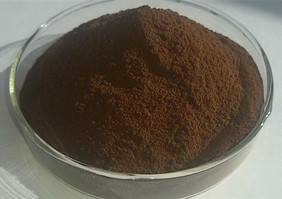Although lignosulfonate has been widely used as dye dispersant, it has some disadvantages. On the one hand, the
colorless catecholic structure in lignin is easy to oxidize to
quinonoid structure in lignin isolation procedures and pulping processes, which not only produces lignin so intensively
darkened that its use in many application areas becomes
objectionable because of the color, and the staining effect
of lignosulfonate on fiber is severe, which greatly dependson the color and chemical structure of lignosulfonate.
On the other hand, lignosulfonate reduces azo dye by
destroying the azo bonds.Previous studies have shown that the structural characteristic of lignosulfonate, especially its molecular weight
and sulfonation degree, has a great effect on its dispersion
property, reduction effect on azo dye, and fiber staining
effect. It was found that the higher the sulfonation degree
of lignosulfonate, the stronger the dispersion of the surfactant was, whereas the hydrophobic interaction of dispersant
and dye weakened.
The molecular weight distribution of lignosulfonate
isolated from residual pulping liquors is wide and the structural features of different molecular weight fractions differ
greatly. In earlier research, the effect of differing molecular weight of the lignosulfonate obtained through ultrafiltration method on the heat stability of a dye–water dispersed system was investigated, and the results showed that lignosulfonate with higher molecular weight had better dispersion
and heat stability property on the dye particle in water.
Investigation of the structural features of differing
molecular weight fractions of lignosulfonate and the effect
of structures on the properties as a dye dispersant has great
significance on the mechanism research of lignin-based dye
dispersant and the development of related products.
This investigation aims to analyze the structure of sodium lignosulfonate (SL) separated by ultrafiltration and determine
the influence of SL with different molecular weights on
the properties of dye using gel permeation chromatography
(GPC), ultraviolet (UV) spectrophotometer, and automatic
potentiometric titrator.

